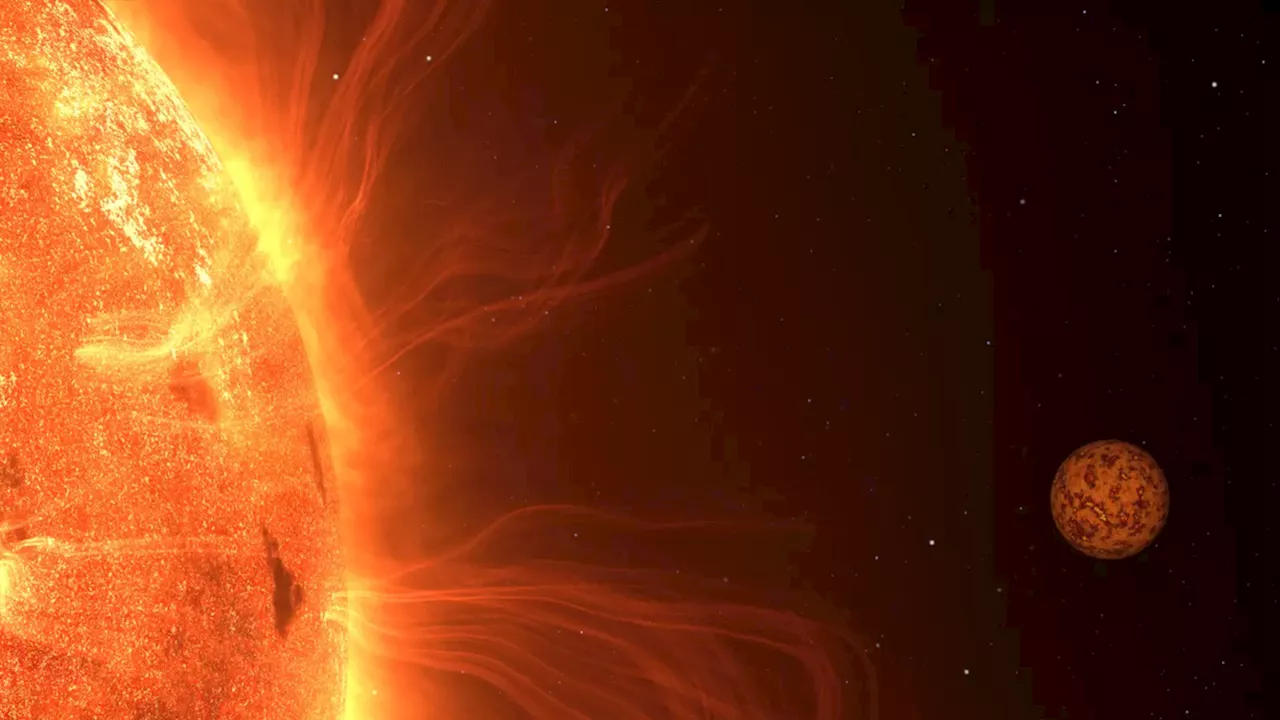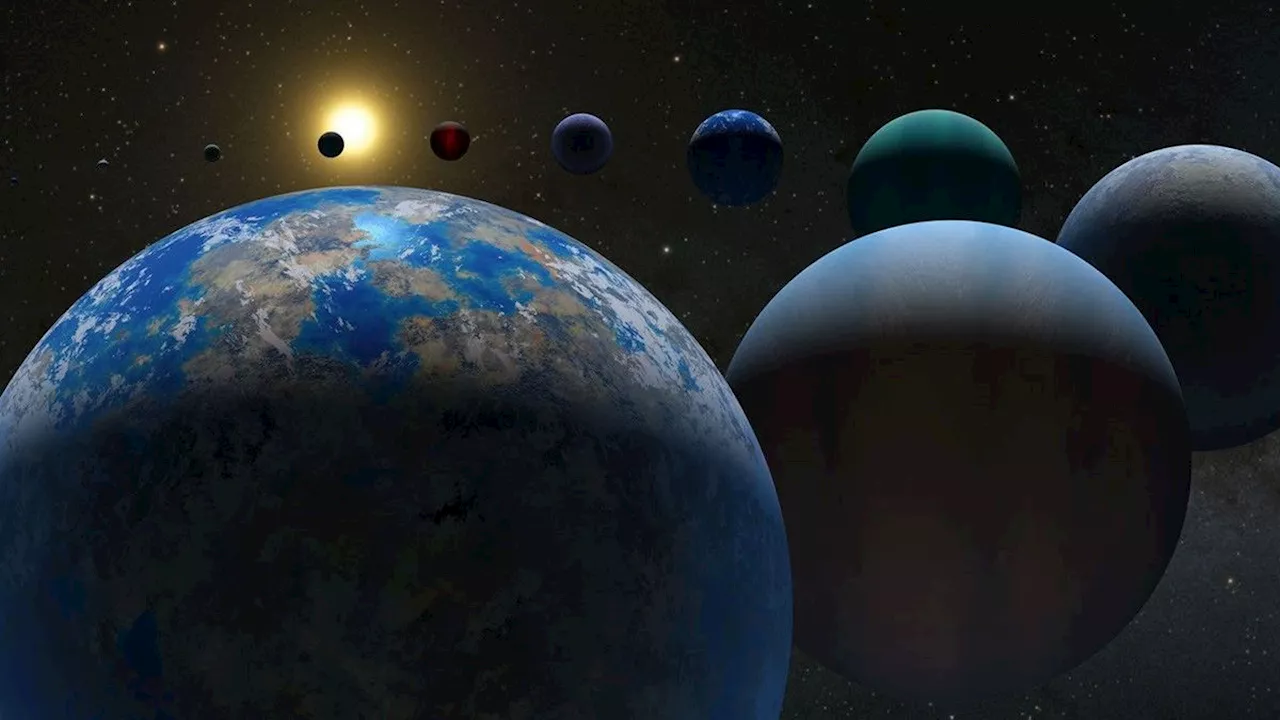A new type of planet, dubbed a 'super-Venus,' has been discovered thanks to data from the James Webb Space Telescope. This finding sheds light on the formation and composition of exoplanets, particularly those in the Earth-to-Neptune size range.
New observational data and simulation models have confirmed a new type of planet unlike anything found in the Solar System. This discovery provides another piece of the puzzle to understand how planets and planetary systems form. To date, more than 5,000 exoplanets have been confirmed around stars other than the Sun. Many exoplanets are unlike any of the planets in the Solar System, making it difficult to guess their true natures.
One of the most common types of exoplanets falls in a size range between Earth and Neptune. Astronomers have debated whether these planets are Earth-like rocky planets with thick hydrogen-rich atmospheres, or Neptune-like icy planets surrounded by water-rich atmospheres, called water worlds. Previous studies have been confounded by layers of high, thick clouds, which seem to be common on this type of planet, and make it difficult to study the atmosphere below the cloud deck.An international team of researchers led by Everett Schlawin at the University of Arizona and Steward Observatory and Kazumasa Ohno at the National Astronomical Observatory of Japan used the James Webb Space Telescope to peer through the clouds on an example of this kind of exoplanet known as GJ 1214 b. Located only 48 light-years from the Solar System, in the direction of the constellation Ophiuchus, GJ 1214 b is the easiest example of this planet to study. 'The signal from the first study is tiny, and so it required careful statistical analysis to ensure that it is real,' explains Ohno. 'At the same time, we needed the physical and chemical insights to extract the true nature of GJ 1214 b's atmosphere from Schlawin's study.' Then Ohno took the lead, using theoretical models to run a plethora of 'what if' scenarios about the atmosphere of the planet. Out of all of these models, the ones which best fit the data all suggest a carbon-dominated atmosphere, like a 'super-Venus.' Although fascinating, the atmospheric signature detected in this work is very small. Schlawin compares it to reading a book, 'It's equivalent to Leo Tolstoy's War and Peace. If I gave you two copies and changed one sentence in one of the books, could you find that sentence?' The team stresses the need for future studies to confirm and expand their findings about this common yet mysterious type of exoplanet. This research contributes significantly to our understanding of exoplanet formation and atmospheric composition, highlighting the diversity of planetary systems beyond our own
Astronomy EXOPLANETS JAMES WEBB SPACE TELESCOPE ATMOSPHERE GJ 1214 B SUPER-VENUS
United States Latest News, United States Headlines
Similar News:You can also read news stories similar to this one that we have collected from other news sources.
 Vegeta Unleashes Super Saiyan 3 in Dragon Ball Super: Super HeroIn a shocking turn of events, Vegeta achieves Super Saiyan 3 for the first time in Dragon Ball Super: Super Hero. Despite his previous limitations, Vegeta surpasses expectations and unlocks this powerful transformation, showcasing a distinct look with his hair pointing towards the sky.
Vegeta Unleashes Super Saiyan 3 in Dragon Ball Super: Super HeroIn a shocking turn of events, Vegeta achieves Super Saiyan 3 for the first time in Dragon Ball Super: Super Hero. Despite his previous limitations, Vegeta surpasses expectations and unlocks this powerful transformation, showcasing a distinct look with his hair pointing towards the sky.
Read more »
 Dragon Ball Super: Super Hero Gives Vegeta His Super Saiyan 3 DebutDragon Ball Super: Super Hero unveils a long-awaited Super Saiyan 3 form for Vegeta, surprising fans with the long-overdue reveal and a closer look at the design.
Dragon Ball Super: Super Hero Gives Vegeta His Super Saiyan 3 DebutDragon Ball Super: Super Hero unveils a long-awaited Super Saiyan 3 form for Vegeta, surprising fans with the long-overdue reveal and a closer look at the design.
Read more »
 Scorpio Venus and 8th House Venus: Unforgettable LoveAn astrologer explains the birth chart placements that make a person unforgettable and capable of haunting their exes' dreams. Venus in Scorpio and Venus in the 8th House are discussed, highlighting their intensity, passion, and transformative power in love.
Scorpio Venus and 8th House Venus: Unforgettable LoveAn astrologer explains the birth chart placements that make a person unforgettable and capable of haunting their exes' dreams. Venus in Scorpio and Venus in the 8th House are discussed, highlighting their intensity, passion, and transformative power in love.
Read more »
 TRAPPIST-1b: Could Earth-like Planet Have a Hazy Atmosphere?New research analyzing data from the James Webb Space Telescope (JWST) suggests that TRAPPIST-1b, the innermost Earth-like planet in the TRAPPIST-1 system, might have a thick, carbon dioxide-rich atmosphere. This finding contradicts previous observations that indicated the planet would be barren and airless. Alternatively, the new measurements also reveal an unexpectedly high surface temperature, potentially suggesting volcanic activity.
TRAPPIST-1b: Could Earth-like Planet Have a Hazy Atmosphere?New research analyzing data from the James Webb Space Telescope (JWST) suggests that TRAPPIST-1b, the innermost Earth-like planet in the TRAPPIST-1 system, might have a thick, carbon dioxide-rich atmosphere. This finding contradicts previous observations that indicated the planet would be barren and airless. Alternatively, the new measurements also reveal an unexpectedly high surface temperature, potentially suggesting volcanic activity.
Read more »
 New Study Suggests Helium Ions Could Have Produced Oxygen in Early Earth's AtmosphereScientists have discovered a new way oxygen could have formed in carbon-dioxide-rich atmospheres, challenging assumptions about how we search for life on other planets.
New Study Suggests Helium Ions Could Have Produced Oxygen in Early Earth's AtmosphereScientists have discovered a new way oxygen could have formed in carbon-dioxide-rich atmospheres, challenging assumptions about how we search for life on other planets.
Read more »
 New data on atmosphere from Earth to the edge of spaceResearchers have created a dataset of the whole atmosphere, enabling new research to be conducted on previously difficult-to-study regions.
New data on atmosphere from Earth to the edge of spaceResearchers have created a dataset of the whole atmosphere, enabling new research to be conducted on previously difficult-to-study regions.
Read more »
